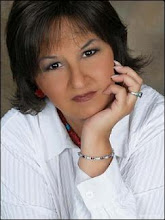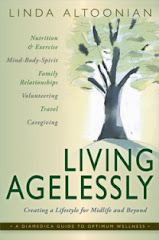Sorry about missing Saturday. This injury is throwing me for a loop. Some days the pain is worse than others and writing is hard to do when all you want to do is chug vicodin and crawl into bed. Here's the delimna though. The more we hurt, the more we want to be immobile, but it's the worse thing we can do.
When someone referred to exercise as medicine, I laughed. Now, when I was young, working-out, dancing and even running was fun to do; I didn't think twice about doing whatever I wanted with my body.
In my thirties and forties, I was chasing children 24/7. That alone can keep you nimble. Teaching in my fifties kept me moving but a bit more slowly. Now that I'm in my sixties, I think first about whether my body can do what my brain wants.
A decision not to do something now has mostly to do with whether I am physically up to the task, and I am hating it! And now that I've fallen, I feel myself thinking even more about this new phase, but here's what I'm finding out fast; the less I move, the more I hurt. And if I do the right kind of exercise in the right way, I can actually relieve pain.
The ailments that accompany aging (including high blood pressure, arthritis, rheumatism and incontinence) can impact the intensity of physical activity but are the very reasons for staying fit, limber and active.
There are several forms of exercise that can be modified in intensity. Walking, jogging and swimming are all excellent for maintaining bone, joint and muscle strength and flexibility, reducing blood pressure and stress levels, and combating pain, but I'm going to talk about yoga as a remedy.
I have tendonitis from the fall and from all the limping. In fact, even though I have to have knee replacement, I'm having more pain in my shoulder and hip. So what does the physical therapist recommend for resolution? Long, slow stretches repeated over and over. Yoga is a form of exercise that embraces long, slow stretches and so much more.
According to the American Heart Association, heart disease is the leading cause of death for men and women in the US, causing 1.5 million heart attacks each year. Recent research has shown that yoga reduces blood pressure, lowers pulse rate, improves artery elasticity, increases the heart's stroke volume and regulates heart rhythm. Yoga benefits the heart and overall health.
Originated in India and now considered a science, yoga has been practiced for over 5,000 years. What differentiates yoga from other exercise routines is its basic principal: that there’s a direct connection between the body, mind and spirit. The theory is that good health is dependent on the positive interrelationship of these three forces, and that balance between them must be achieved.
Yoga’s unique method for maintaining this balance is to combine physical movement with proper breathing and meditation techniques. The exercises are intended to increase flexibility, improve posture and put pressure on the glandular systems to increase efficiency. Deep breathing oxygenates the blood and induces a feeling of well-being. Meditation reduces stress and heart-harmful emotions like anxiety, hostility and hopelessness. Visit www.abc-of-yoga.com for information and products.
See your physician for a thorough examination. Discuss your level of physical fitness and appropriate exercise routines, including duration and frequency. Ask whether yoga will work for your exercise of choice or as an addition to another program. Modern medicine has certainly recognized its physiological, psychological and biochemical benefits.
Tuesday, May 8, 2012
Subscribe to:
Post Comments (Atom)


No comments:
Post a Comment